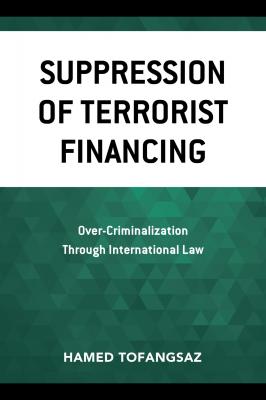Suppression Of Terrorist Financing. Hamed Tofangsaz
Читать онлайн.| Название | Suppression Of Terrorist Financing |
|---|---|
| Автор произведения | Hamed Tofangsaz |
| Жанр | Юриспруденция, право |
| Серия | |
| Издательство | Юриспруденция, право |
| Год выпуска | 0 |
| isbn | 9781793619501 |
With regard to the targets of the underlying offense, there is a critical controversy about whether acts against nonhuman targets can be labeled as terrorism. A “British-inspired definition of terrorism”15 includes various forms of damage to property and interference with or disruption of essential utilities and infrastructure.16 Others restrict this definition by requiring that such property damage needs to be “likely to endanger human life.”17 In some regional agreements, an act falls within the scope of terrorism if it is taken with the intention of destabilizing or destroying “the fundamental political, constitutional, economic, or social structure of a country or an international organization.”18 Although the property damage element is included in the UN Draft Convention definition of terrorist acts,19 it is neither in the list of the acts drawn by the Resolution 1566 of the Security Council on the condemnation of terrorism20 nor consistent with the meaning of terrorism advocated by the Special Rapporteur on the promotion and protection of human rights and fundamental freedoms while countering terrorism.21 The concern expressed is that while such inclusion can capture conduct of a terrorist nature, it is likely to target “conduct with no bearing at all to terrorism.”22 A protest against the WTO, for instance, would be a terrorist act if it resulted in property damage.23
With regard to the special intent of terrorism, the League of Nations regarded terrorism as a criminal act with the intention of creating “a state of terror in the minds of particular persons, or a group of persons or the general public.”24 In this definition, it is not clear whether intimidation is the primary purpose of the terrorists or whether it is a means to an ulterior end. A number of recent definitions broaden the element by (relying on the British approach) requiring that the purpose of an act of terrorism must be “to intimidate a population, or to compel a government or an international organization to do or to abstain from doing any act.”25 The difficulty is that it is not clear what degree of intimidation or compulsion needs to occur for an act to be considered terrorism:26 mere intimidation27 or serious intimidation?28 In addition, the concern has been expressed that none of these elements are easy to prove because terrorists do not necessarily make their specific demands or make openly public the purpose of their action.29 In the Boston marathon bombings in 2013, for example, it has not been plainly announced what the perpetrators intended to prompt the U.S. government to do or to abstain from doing.
What complicates defining the subjective element of terrorism is the question whether intimidation of the public or coercion of a state constitutes terrorism if it is motivated by personal impulses or by material gain such as in blackmail, extortion, revenge, or personal hatred. While some propose that even acts of violence for personal gain should constitute terrorism,30 others exclude any terrorist-type conduct with a private motive from a definition of terrorism.31 They argue that “if a definition of terrorism is to reflect the real nature of the harm that terrorism inflicts on the political process,” public motives, including political, ideological, religious, ethnic, or philosophical motives, must be distinguished from “private violence.”32 It is argued that setting fire to a building motivated by nonpolitical, nonreligious, or nonideological cannot be regarded as terrorism but arson as a public motive is lacking.33 Similarly, an aggravated bank robbery may end with killing or hostage taking, but if done in order for the bandits to flee unharmed, the intimidating of the public and coercing the police not to take any action against the bandits cannot be regarded terrorism as this action has not be done for advancing an ideological, political, or other public cause (there are of course a range of common crimes suited to deal with such situations).34
From a criminal law perspective, it is again controversial whether while motive is irrelevant to criminal culpability, the existing criminal law needs to be expanded so as to include motive as an element of the crime of terrorism. The proponents of such inclusion believe that requiring motive as a mental element “allows the criminal law to more finely target, stigmatise and deter what is considered by society to be especially wrongful about terrorism” “which is not inherent in a physical act of violence alone.”35 This may also help “satisfy public indignation,” “better express community condemnation,” “placate popular (but reasonable) demands for justice,” and send “a symbolic message that certain kinds of violence cannot be tolerated in plural, secular democracies.”36
Конец ознакомительного фрагмента.
Текст предоставлен ООО «ЛитРес».
Прочитайте эту книгу целиком, купив полную легальную версию на ЛитРес.
Безопасно оплатить книгу можно банковской картой Visa, MasterCard, Maestro, со счета мобильного телефона, с платежного терминала, в салоне МТС или Связной, через PayPal, WebMoney, Яндекс.Деньги, QIWI Кошелек, бонусными картами или другим удобным Вам способом.
